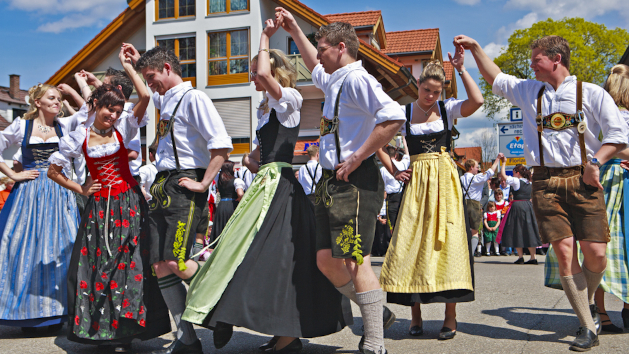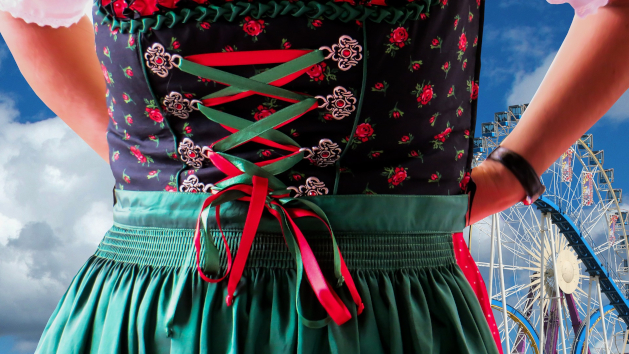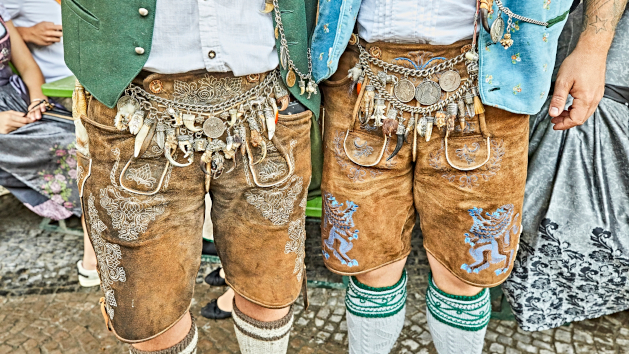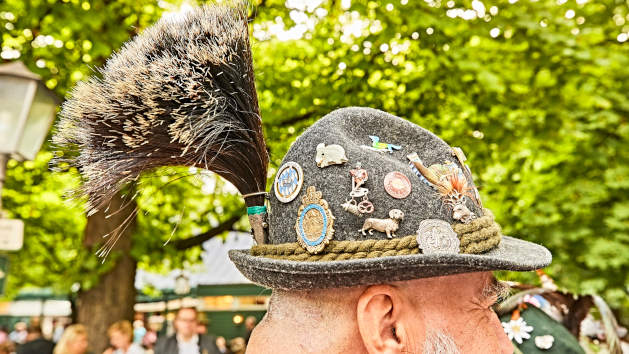Traditional garments in Bavaria
The famous traditional garments are a long-lasting part of Bavarian identity.
The men’s closing men consists of a knee-length Lederhose (literally “leather pants”) made of raw leather and usually held up by assorted suspenders, a Janker, a straight-cut, hips-length Tyrolean jacket of tumbled sheep’s wool, a traditional hat (“Steyrer” hut or “Tegernseer” hut), as well as sideways laced shoes.
Women wear a Dirndl, a dress with a tight bodice and a wide skirt worn over a blouse and covered by an apron. Depending on the region of origin, the colors or embroideries vary. In addition, depending on her marital status, the girl will knot her apron in a specific way.
The survival of this clothing tradition was far from certain: during the 19th century, people started to associate Lederhose and Dirndl with rural areas, outdated when compared to modernizing cities in the industrial revolution. The garments survived throughout the years thanks to the 800 societies for traditional costumes to preserve this part of regional culture and helping to coin the image of a Lederhose- or Dirndl-wearing Bavarian.
Nowadays, most Bavarians own a Lederhose or Dirndl, which they wear on special occasions such as weddings. Fun fact: the emigrated author Oskar Maria Graf, who fled Nazi Germany in the 1930s, was always homesick for Bavaria. He is said to have faithfully worn a Lederhose in New York City every day until his death in 1967.









